Video Now Available | Karen Wilkin Gallery Talk for "William Perehudoff: Architect of Color"
June 19, 2019 - Berry Campbell
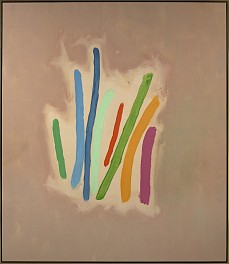
June 19, 2019 - Berry Campbell
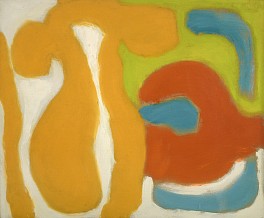
June 13, 2019 - Berry Campbell
Berry Campbell is pleased to announce the exclusive representation of the Estate of Edward Zutrau (1922-1993). Exhibition forthcoming in 2020.
View Works by Edward Zutrau
EDWARD ZUTRAU (1922–1993)
An artist for whom life and art were intertwined, Edward Zutrau worked with dedication, energy, and intensity throughout a long career—lasting from the 1940s through the early 1990s. While he resided mostly in Brooklyn and Manhattan, his travels had an important impact on his creative development, especially the five years he spent in Japan, where his art received a significant amount of appreciation and recognition. Blending precepts of the New York School with a strong physicality, Zutrau’s works draw the viewer into both feeling and contemplation. His art was admired by his close friend Betty Parsons, who held three solo shows of his paintings at her renowned New York gallery from 1972 to 1980. As an art teacher, Zutrau inspired his many students with a love of materials and art as a means of self-expression rather than of technical virtuosity. He upheld the high ideals he conveyed in his teaching in his own work, which was always idea-driven, representing his constant search for clarity and concision.
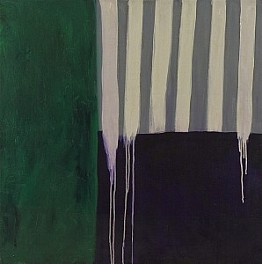
June 12, 2019 - Luther W. Brady Art Gallery
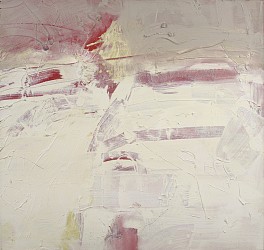
June 7, 2019 - Phillip Barcio for Ideel Art
More than a century ago, Wassily Kandinsky asked whether purely abstract art could ever achieve the same emotional effect as music. Since the 1950s, Frank Wimberley has been proving that it can, by simply doing it—composing images that pull the human mind and heart along on a journey of feeling, same as a symphony might. One year ago, Berry Campbell gallery in New York announced it had signed Wimberley to the roster of artists the gallery represents. Their highly anticipated first solo exhibition of his work just opened on 30 May. Featuring more than 30 paintings spanning from the early days of his career to works created just this year, the museum quality exhibition breathes fresh life into the landscape of contemporary American abstraction. In fact, the emotional content of these paintings is so condensed it is frankly difficult to experience the whole exhibition in one visit. Wimberley starts each painting with what he calls an “attack”—an instinctive incursion into the blankness. That first, intuitive confrontation with the unknown territory of the surface leaves behind a known quantity: a mark. Like a mystical boat carrying the rider across a spiritual river into the netherworld, that first mark guides Wimberley along through the composition, collaborating with him on a series of choices that lead the picture to its unimaginable, yet inescapable aesthetic conclusions. Imagine a jazz trio: the drummer strikes the snare drum; the keyboard player riffs on that sound; the horn player follows suit; a tempo emerges; finally, the improvisation takes on a life of its own and pulls the players along till it plays itself out. This is how Wimberley paints. Like a listener at a jazz concert, a viewer at this Wimberley exhibition may be best served by an attitude of openness verging on surrender. Pick a starting point and let your eye establish its own tempo. The composition will carry you along.
Read More >>
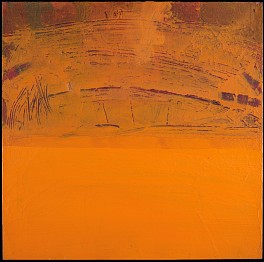
June 4, 2019 - NYC GALLERY OPENINGS
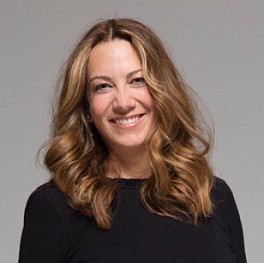
June 4, 2019 - New York Studio School

May 30, 2019 - Mark Segal for The East Hampton Star
A solo show of work by Frank Wimberley will open today at the Berry Campbell Gallery in Chelsea with a reception from 6 to 8 p.m. and continue through July 3. Known since the 1960s for his dynamic, multilayered abstract paintings, Mr. Wimberley, who lives in Sag Harbor, takes the theme of each painting from the first stroke he lays down and follows it to its conclusion, not unlike improvisation in jazz.
Read More >>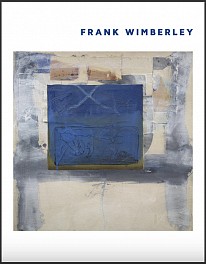
May 29, 2019 - Berry Campbell
We are preparing for our Frank Wimberley exhibition, opening on May 30, 2019. Please read our online catalogue to learn more about the artist and his career.
Frank Wimberley
May 30 - July 3, 2019
Opening Reception
May 30, 2019
6-8 PM
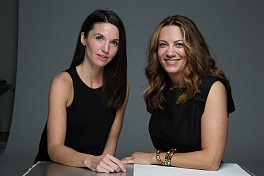
May 22, 2019 - Yitzi Weiner for Authority Magazine
Photo: Michael Halsband
I had the pleasure to interview Christine Berry and Martha Campbell. Christine and Martha opened Berry Campbell Gallery in Chelsea in 2013 and have many parallels in their backgrounds and interests. Both studied art history in college and began their careers in the museum world, but mostly importantly both share a curatorial vision. Berry, from Geneseo, New York, graduated from Baylor University in Waco, Texas in 1992. Campbell, from Greenville in the Mississippi Delta, attended boarding school at Groton School in Massachusetts, and graduated from Vanderbilt University in Nashville, Tennessee, in 2006. Berry received a Master’s Degree in art history and criticism at the University of North Texas, along with a certification in museum studies and education. She worked at the Modern Art Museum of Fort Worth, Texas, as Assistant Curator before moving to New York for a position at the Whitney Museum of American Art. Campbell went directly from college to a job at the Phillips Collection in Washington, D.C. She then decided to explore the gallery world before pursuing a further degree in art history and was hired at age 24 as an associate director at Spanierman Modern in New York. “I loved everything about the gallery world, from curating exhibitions to rediscovering artists,” Campbell recalls. Spanierman Modern, which focused on mid-twentieth century abstraction and mid-career artists in the modernist tradition, was part of Spanierman Gallery, one of New York’s most prominent American art galleries since the 1960s. Berry, who moved from the public to the private sector in several roles, had come to Spanierman Gallery as associate director in 2003. Both art dealers developed a strong emphasis on research and networking with artists and scholars during their art world years. They decided to work together, opening Berry Campbell Gallery in 2013 in the heart of New York’s Chelsea art district, at 530 West 24th Street on the ground floor. The two recognized that they shared a curatorial vision based in “an understanding of art, history, languages, business, and people.” In 2015, the gallery expanded, doubling its size with an additional 2,000 square feet of exhibition space. Highlighting a selection of postwar and contemporary artists, the gallery fulfills an important gap in the art world, revealing a depth within American modernism that is just beginning to be understood, encompassing the many artists who were left behind due to race, gender, or geography — beyond such legendary figures as Pollock and de Kooning. Since its inception, the gallery has been especially instrumental in giving women artists long overdue consideration, an effort that museums have only just begun to take up, such as in the 2016 traveling exhibition, Women of Abstract Expressionism curated by University of Denver professor Gwen F. Chanzit. This show featured work by Perle Fine and Judith Godwin, both represented by Berry Campbell, along with that of Helen Frankenthaler, Lee Krasner, and Joan Mitchell.
Thank you so much for joining us! Can you tell us the story about what brought you both to this specific career path?
Martha Campbell: I’ve always loved art from as early as I can remember, but it never dawned on me that I could pursue art as a career path until college. When I entered Vanderbilt, I intended to major in Econ and get a job on Wall Street after college, however, I always tried to take as many Art History classes as I could. One day, as I was talking to my parents about my career after college, they said, “well you know you can major in art history and pursue it as a career.” They outlined that I could work in a museum or an art gallery and with this knowledge, I majored in Art History and upon graduation, decided that I would try out working at a museum and at a gallery to see which I liked better. After getting a job at the Phllips Collection in DC and working there for a year, I was offered a job at Spanierman Gallery in New York. I loved that in the gallery world, you could still do research on historical artists as well as interact with the public on a daily basis. Thus, as soon as I started working in the gallery world, I knew that this was the career path I wanted to pursue.
Christine Berry: My mother was a 5th grade teacher in rural Western New York state (where I grew up). One year as a Christmas gift, she brought home a huge coffee table book on Renoir. I was enamored as I turned every page — memorized by these beautiful painted scenes and rosy-cheeked people. Just after Christmas, we traveled to Boston to visit my mom’s sister. Aunt Dot was painter (with a day job) and brought us to the Museum of Fine Arts in Boston. As we were working our way through the museum, we came on to the French Impressionism room, my heart skipped a beat as my eyes found the painting I had been starring in the book, Renoir’s “Dancing in the Country (Dance at Bouvigal, 1883).” It was the most beautiful thing I had ever seen (and it was real!). I started to love art, and later realized it was something you could actually study. (Two college degrees, several museum jobs and now owning an art gallery; the coffee table book made a huge impact!)
Read More >>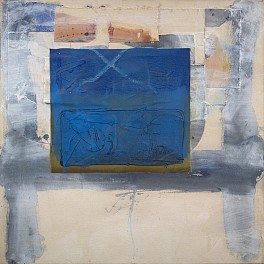
May 21, 2019 - Michelle Trauring for Sag Harbor Express
Sag Harbor has known 92-year-old artist Frank Wimberley since the 1960s — but in New York, it’s time for a re-introduction, according to Berry Campbell Gallery, who will open a survey of the artist’s dynamic, multi-layered abstract paintings with a reception on Thursday, May 30, from 6 to 8 p.m.
“Over the course of a career that has lasted more than 50 years, Frank Wimberley has felt abstract painting to be a continuous adventure,” a press release said. “The artist is a well-known presence in the art scene on the East End of Long Island and an important figure in African-American art since the 1960s.”
Growing up in the New Jersey suburbs, Wimberley was drawn to art and music — interests supported by his mother, a ceramicist and pianist who involved him in her work, and his father, who gifted him a trumpet.
In 1945, after serving in the Army, he attended Howard University, where he studied painting with three of the most influential African-American artists of the mid-20th century — James Amos Porter, James Lesesne Wells and Loïs Mailou Jones. There, he also immersed himself in jazz, listening to it and playing it himself, leading to long friendships with the likes of Miles Davis, Ron Carter and Wayne Shorter.
But after two years — and with the basics under his belt — Wimberley left, ready to teach himself. At first, he practiced ceramics, following in his mother’s footsteps and influenced by the tactile and sculptural pottery of Peter Voulkos.
“However, on discovering that Voulkos was also a painter, Wimberley realized that he did not need to be committed to one medium, and instead ‘could do several,’” a press release said. “In the 1950s, while living in Queens with his wife, Juanita, and son, Walden, he worked the night shift at a local post office. This freed him to paint and take care of Walden during the day, while Juanita was at work. The post office provided him ‘with money—and time,’ which he felt was ‘the most important thing.’”
Read More >>